
In firearm designs, the term single-shot refers to guns that can hold only a single round of ammunition inside and thus must be reloaded manually after every shot. Compared to multi-shot repeating firearms ("repeaters"), single-shot designs have no moving parts other than the trigger, hammer/firing pin or frizzen, and therefore do not need a sizable receiver behind the barrel to accommodate a moving action, making them far less complex and more robust than revolvers or magazine/belt-fed firearms, but also with much slower rates of fire.

A cartridge or a round is a type of pre-assembled firearm ammunition packaging a projectile, a propellant substance and an ignition device (primer) within a metallic, paper, or plastic case that is precisely made to fit within the barrel chamber of a breechloading gun, for the practical purpose of convenient transportation and handling during shooting. Although in popular usage the term "bullet" is often informally used to refer to a complete cartridge, the correct usage only refers to the projectile.

The .22 Long Rifle or simply .22 LR or 22 is a long-established variety of .22 caliber rimfire ammunition originating from the United States. It is used in a wide range of rifles, pistols, revolvers, smoothbore shotguns, and submachine guns.
Internal ballistics, a subfield of ballistics, is the study of the propulsion of a projectile.

The .45 Colt (11.43×33mmR), is a rimmed, straight-walled, handgun cartridge dating to 1872. It was originally a black-powder revolver round developed for the Colt Single Action Army revolver. This cartridge was adopted by the U.S. Army in 1873 and served as an official US military handgun cartridge for 14 years, before being replaced by the .38 Long Colt in 1892.

.22 Short is a variety of .22 caliber (5.6 mm) rimfire ammunition. Developed in 1857 for the first Smith & Wesson revolver, the .22 rimfire was the first American metallic cartridge. The original loading was a 29 or 30 gr bullet and 4 gr of black powder. The original .22 rimfire cartridge was renamed .22 Short with the introduction of the .22 Long in 1871.

The .32-20 Winchester, also known as .32 WCF , was the first small-game lever-action cartridge that Winchester produced. It was initially introduced as a black-powder cartridge in 1882 for small-game, varmint hunting, and deer. Colt produced a single-action revolver chambered for this cartridge a few years later.

The .460 Weatherby Magnum is a belted, bottlenecked rifle cartridge, developed by Roy Weatherby in 1957. The cartridge is based on the .378 Weatherby Magnum necked up to accept the .458-inch (11.6 mm) bullet. The original .378 Weatherby Magnum parent case was inspired by the .416 Rigby. The .460 Weatherby Magnum was designed as an African dangerous game rifle cartridge for the hunting of heavy, thick skinned dangerous game.

The .30-40 Krag was a cartridge developed in the early 1890s to provide the U.S. armed forces with a smokeless powder cartridge suited for use with modern small-bore repeating rifles to be selected in the 1892 small arm trials. Since the cartridge it was replacing was the .45-70 Government, the new cartridge was considered small-bore at the time. The rifle ultimately selected for use by the Army was the Krag–Jørgensen, formally adopted as the M1892 Springfield. The cartridge was also used in the M1893, M1895, M1897, and M1900 Gatling guns.
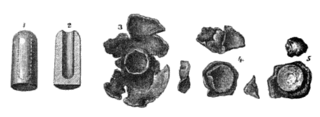
The term express was first applied to hunting rifles and ammunition beginning in the mid-19th century, to indicate a rifle or ammunition capable of higher than typical velocities. The early express cartridges used a heavy charge of black powder to propel a lightweight, often hollow point bullet, at high velocities to maximize point blank range. Later the express cartridges were loaded with nitrocellulose-based gunpowder, leading to the Nitro Express cartridges, the first of which was the .450 Nitro Express.
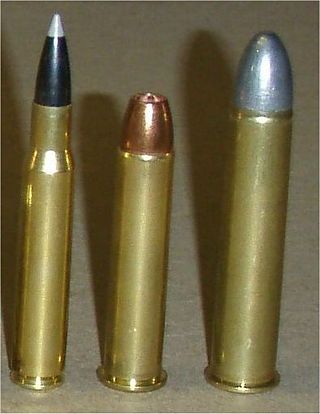
The .45-70, also known as the .45-70 Government, .45-70 Springfield, and .45-21⁄10" Sharps, is a .45 caliber rifle cartridge originally holding 70 grains of black powder that was developed at the U.S. Army's Springfield Armory for use in the Springfield Model 1873. It was a replacement for the stop-gap .50-70 Government cartridge, which had been adopted in 1866, one year after the end of the American Civil War, and is known by collectors as the "Trapdoor Springfield".
The .470 Capstick is a rifle cartridge created by Col. Arthur B Alphin from A-Square in 1990, named after writer and hunter Peter Hathaway Capstick. It is based on a .375 H&H Magnum case blown out and necked to accept a .475 inch (12 mm) bullet. With 500 grain bullets, it can achieve 2400 feet per second (730 m/s) muzzle velocity from a 26" barrel.
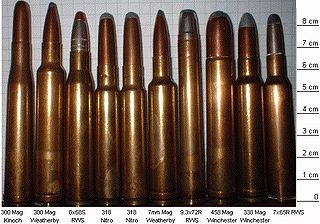
The .458 Winchester Magnum is a belted, straight-taper cased, Big Five game rifle cartridge. It was introduced commercially in 1956 by Winchester and first chambered in the Winchester Model 70 African rifle. It was designed to compete against the .450 Nitro Express and the .470 Nitro Express cartridges used in big bore British double rifles. The .458 Winchester Magnum remains one of the most popular large game cartridges, and most major ammunition manufacturers offer a selection of .458 ammunition.
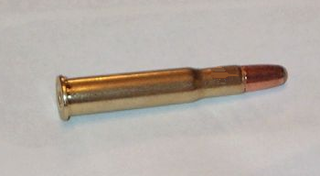
The .30-30 Winchester cartridge was first marketed for the Winchester Model 1894 lever-action rifle in 1895. The .30-30, as it is most commonly known, along with the .25-35 Winchester were offered that year as the United States' first small-bore sporting rifle cartridges designed for smokeless powder. Since its introduction, it has been surpassed by many cartridges in the long-range shooting attributes of speed, energy, and trajectory, yet remains in widespread use because of its practical effectiveness in forested hunting situations.

The .444 Marlin (10.9×57mmR) is a rifle cartridge designed in 1964 by Marlin Firearms and Remington Arms. It was designed to fill in a gap left by the older .45-70 when that cartridge was not available in any new lever-action rifles; at the time it was the largest lever-action cartridge available. The .444 resembles a lengthened .44 Magnum and provides a significant increase in velocity. It is usually used in the Marlin 444 lever-action rifle. Currently, Marlin, who is now owned by Ruger Firearms, does not offer the .444 chambering in any of their rifles. It remains to be seen when or if they will bring the chambering back into production.
The Marlin Model 336 is a lever-action rifle and carbine made by Marlin Firearms. Since its introduction in 1948, it has been offered in a number of different calibers and barrel lengths, but is commonly chambered in .30-30 Winchester or .35 Remington, using a 20- or 24-inch barrel. Currently, the model with a 24-inch barrel is only available in .30-30 Winchester. The Model 336 is now back in production as of March 27, 2023.

Overpressure ammunition, commonly designated as +P or +P+, is small arms ammunition that has been loaded to produce a higher internal pressure when fired than is standard for ammunition of its caliber, but less than the pressures generated by a proof round. This is done typically to produce rounds with a higher muzzle velocity and stopping power, such as ammunition used for security, defensive or hunting purposes. Because of this, +P ammunition is typically found in handgun calibers which might be used for armed security and defensive purposes.

The .50-90 Sharps, also known as the .50-21⁄2" Sharps, is a black-powder rifle cartridge cartridge that was introduced by Sharps Rifle Manufacturing Company in 1872 as a buffalo hunting round. Like other large black-powder rounds, it incorporates a heavy bullet and a large powder volume, leading to high muzzle energies.
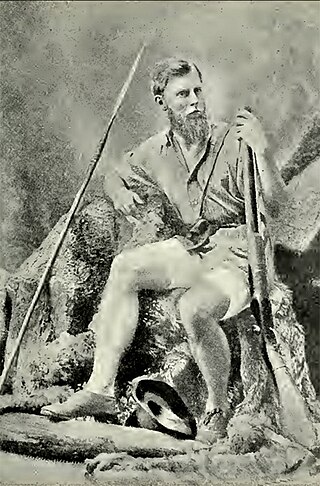
Four bore or 4 bore is a black powder caliber of the 19th century, used for the hunting of large and potentially dangerous game animals. The specifications place this caliber between the larger two bore and the lesser six bore. This caliber was the quintessential elephant gun caliber of the black powder safari rifles. The caliber was also used for the Coffman cartridges used for starting large aero engines such as the Rolls-Royce Griffon as used in the later Marks of Supermarine Spitfire.
The .277 Wolverine (6.8x39mm) is a wildcat cartridge. It is a multi-purpose mid-power cartridge with increased ballistic performance over the AR-15's traditional .223 Remington cartridge. The use of a modified 5.56 case means that at minimum, only a new barrel is needed to convert any 5.56-based firearm to .277 Wolverine.
1. The Complete Blackpowder Handbook, 3rd Edition by Sam Fadala, Krause Publishing, 1996, P. 247















